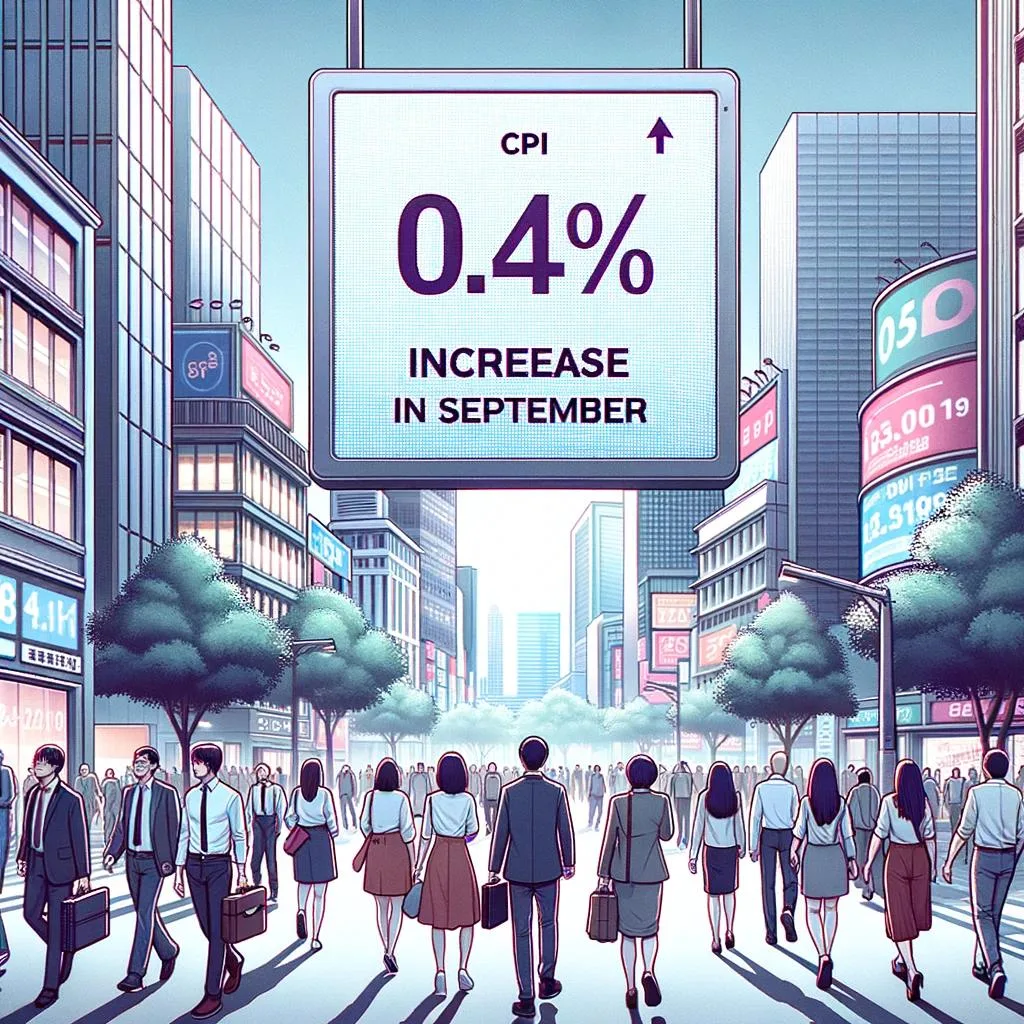
CPI, inflation in focus as September’s Consumer Price Index (CPI) rose by 0.4%, surpassing economists’ expectations of a 0.3% increase. This figure exceeded the previous month’s 0.6% rise. The year-over-year CPI increase stood at 3.7%, surpassing forecasts of 3.6% and August’s 3.7%. The core CPI, which excludes food and energy costs, experienced a 0.3% rise in September, in line with estimates and the previous month’s 0.3%. The year-over-year core CPI was 4.1%, matching forecasts and down from August’s 4.3%.
FOMC Meeting Minutes Reveal Potential Rate Hike
The Federal Reserve’s Federal Open Market Committee (FOMC) meeting minutes indicated that policymakers were mostly in agreement that they would likely need to hike rates one more time before ending the monetary tightening cycle. This news led rate traders to expect a 10% chance of a rate hike at the Fed’s November meeting. However, the odds increase to 30% by year-end, according to the CME’s FedWatch.
Bitcoin Price Reacts to CPI Data
In response to the CPI data, the price of bitcoin (BTC) fell by 1.2% to $26,770. This decline demonstrates the sensitivity of cryptocurrency markets to macroeconomic indicators, such as CPI and inflation rates.
Understanding the Importance of CPI and Inflation
The Consumer Price Index (CPI) is a crucial measure of inflation, as it tracks the changes in prices of a basket of goods and services over time. It is an essential indicator for policymakers, businesses, and investors, as it provides insights into the overall health of the economy and helps guide decisions on interest rates and monetary policy.
Inflation, measured by the CPI, impacts various aspects of the economy, including consumer spending, investment decisions, and wage negotiations. When inflation is high, consumers may cut back on spending, leading to a slowdown in economic growth. Conversely, low inflation may encourage spending and investment, supporting economic expansion.
Implications of Higher-than-Expected CPI Data
The higher-than-expected CPI data for September indicates that inflationary pressures are still present in the economy. This situation may prompt the Federal Reserve to consider raising interest rates sooner than anticipated to curb inflation and maintain economic stability. Higher interest rates can lead to increased borrowing costs for consumers and businesses, potentially slowing down economic growth.
Furthermore, the higher CPI data may impact financial markets, as investors react to the possibility of a rate hike and adjust their portfolios accordingly. In the case of bitcoin, the decline in price following the CPI data release suggests that investors may be factoring in the potential impact of higher interest rates on the cryptocurrency market.
Looking Ahead: Monitoring CPI and Inflation Trends
As we move forward, it is essential to keep a close eye on CPI and inflation trends to gauge the overall health of the economy and anticipate potential shifts in monetary policy. Investors, businesses, and policymakers must remain vigilant and adapt to changing economic conditions to make informed decisions and maintain financial stability.
In conclusion, the September CPI data exceeded expectations, highlighting the ongoing inflationary pressures in the economy. The Federal Reserve’s FOMC meeting minutes suggest that a rate hike may be on the horizon, with rate traders anticipating a 10% chance of an increase at the November meeting and a 30% chance by year-end. These developments may have significant implications for financial markets, as demonstrated by the decline in bitcoin’s price following the CPI data release.




